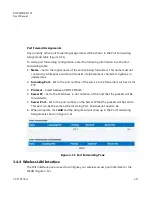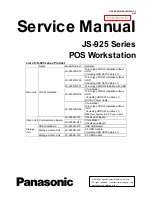
EXPLORER 122
User Manual
98-150578-A
3-10
Static IP Assignments
The IP address to MAC pairing for static IP assignments is contained in Figure 3-9.
Figure 3-9. DHCP Server - Static IP Assignments Table
Static Routes
Static routes are configured and listed in Figure 3-10
Figure 3-10. DHCP Server - Static Routes Tables
3.4.3
Port Forwarding
The terminal provides a network address translator (NAT) that creates a private network for
devices attached to the terminal. Devices behind the terminal NAT are invisible to any hosts
outside the terminal NAT.
The only way to access a device behind the terminal is either:
• Have the device behind the terminal initiate the connection
• Create a port forwarding assignment to the device in the terminal
Port forwarding allows incoming UDP or TCP packets destined for a specific port to be
forwarded to a network device (client or host) “behind” the terminal NAT. The incoming
packet will be forwarded to the destination port and IP address defined by the port
forwarding rule. Using port forwarding assigns the port being forwarded to a single host IP
address and excludes this port from being used by any other host.
CAUTION
: Modifying port forwarding settings can result in loss of
connectivity to the network. See Section 4 for details on network
configuration and examples.
















































